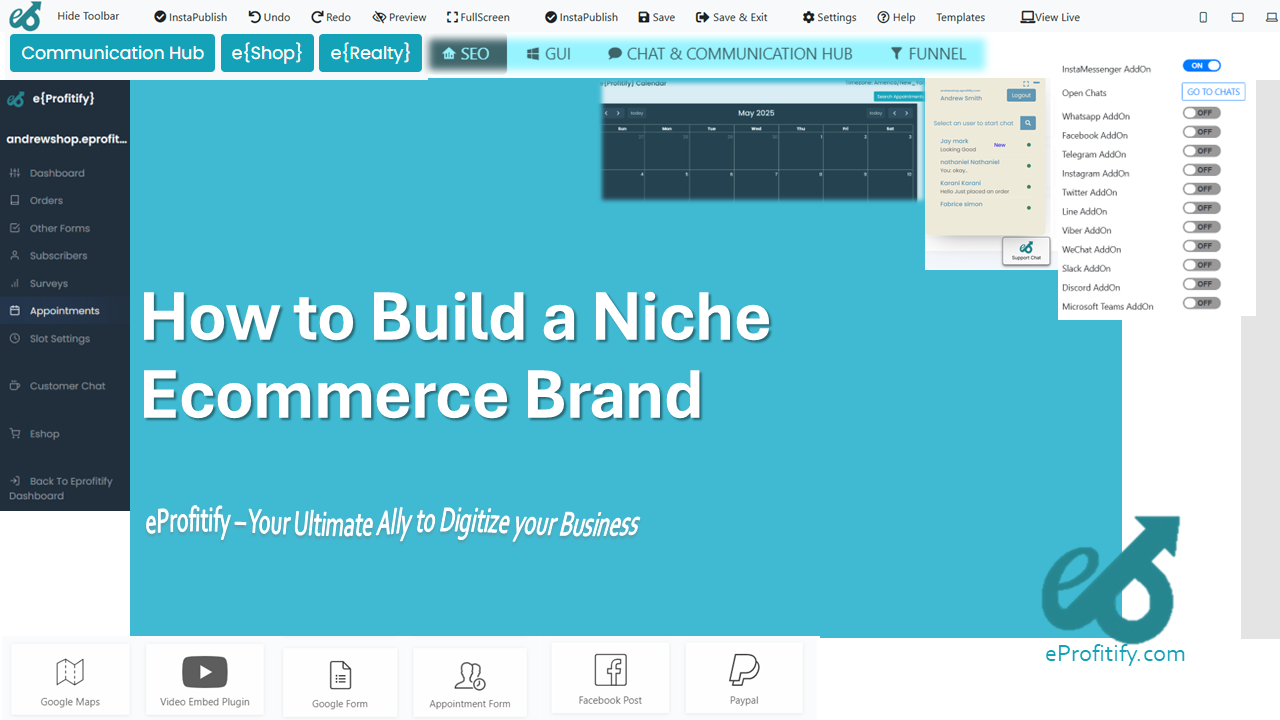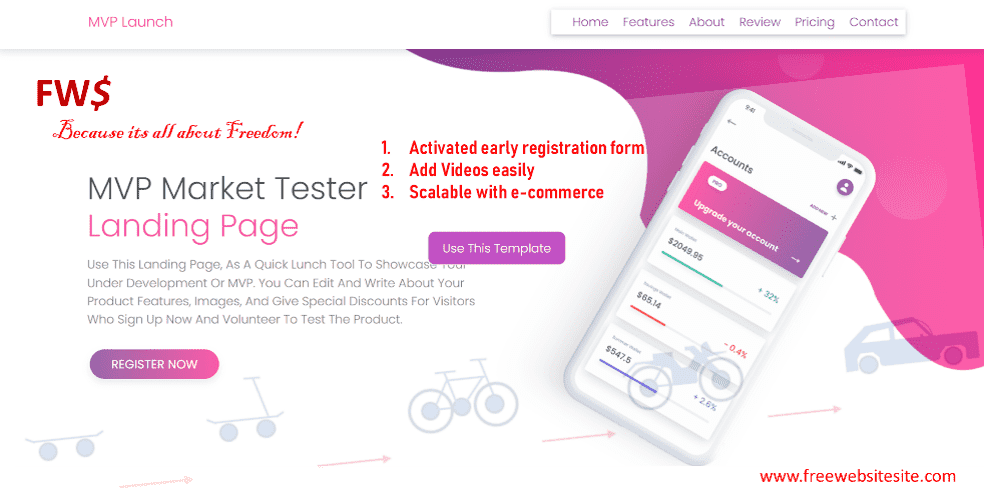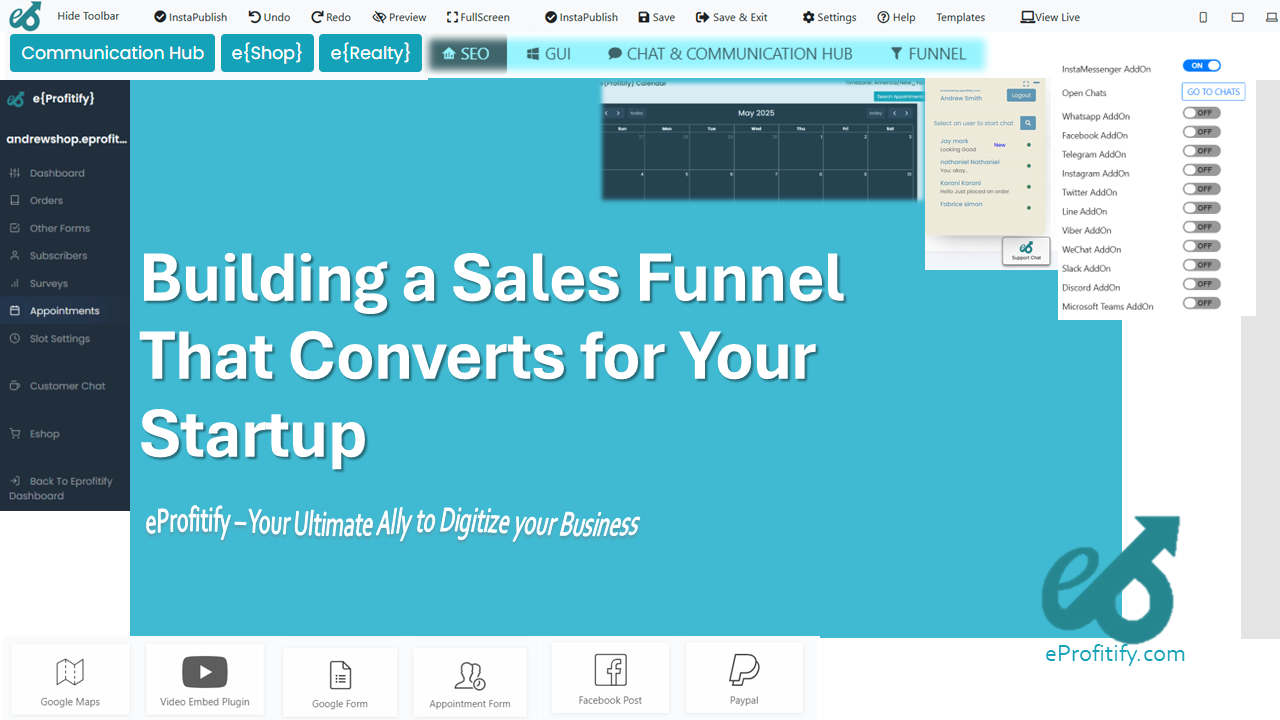How to Build a Niche Ecommerce Brand

How to Build a Niche Ecommerce Brand: A Data-Driven Guide
(And Why Tools Like eProfitify Are Essential)
The global ecommerce market is projected to exceed $6.3 trillion in 2024, underscoring immense opportunities for brands willing to carve out specialized niches. Niche ecommerce ventures often outperform broader competitors by focusing on hyper-targeted audiences, offering personalized experiences, and cultivating loyal communities. However, success hinges on strategic planning, robust tech infrastructure, and customer-centric execution. This guide breaks down the process of building a niche brand, supported by actionable insights and statistics, while highlighting how platforms like eProfitify streamline operations through features like CRM, instant messaging, and integrated ecommerce tools.
1. Identify a Profitable Niche
The foundation of a niche brand lies in addressing unmet needs. Start by researching gaps in the market using tools like Google Trends, Keyword Planner, and social media analytics. Validate your niche by assessing:
- Demand: Are customers actively searching for these products?
- Competition: Can you differentiate yourself from existing players?
- Profitability: What are the margins and logistical challenges?
For example, the global specialty ecommerce market is growing at a 6.5% CAGR (2021–2028), indicating strong potential for niches like eco-friendly pet products or vegan skincare.
2. Understand Your Target Audience
Create detailed buyer personas by analyzing demographics, pain points, and purchasing behavior. Use surveys, social listening, and competitor reviews to refine your strategy.
- Stat: 80% of consumers are more likely to buy from brands that personalize experiences (Epsilon).
- Action: Segment audiences based on preferences and habits to tailor marketing and product offerings.
Tools like eProfitify’s CRM help track customer interactions, enabling data-driven personalization at scale.
3. Develop a Strong Brand Identity
Your brand identity—name, logo, voice, and story—should resonate deeply with your audience.
- Case Study: Brands like Glossier thrived by building communities around inclusive beauty narratives.
- Tip: Use storytelling to highlight your niche’s uniqueness. For instance, if selling artisanal coffee, emphasize sustainable sourcing or farmer partnerships.
4. Build a User-Friendly Ecommerce Website
Your website is your digital storefront. Prioritize:
- Mobile Optimization: 58% of global website traffic comes from mobile devices (Statista).
- SEO: Optimize product descriptions with niche keywords.
- Integrated Tools: Platforms like eProfitify offer drag-and-drop builders, SEO tools, and responsive templates, reducing development time by up to 70%.
Key Features of eProfitify:
- Instant Messaging: Resolve queries in real time, boosting conversion rates.
- Appointment Management: Ideal for hybrid brands (e.g., wellness products + virtual consultations).
- Ecommerce Integration: Seamlessly manage inventory, payments, and shipping.
5. Curate a Unique Product Assortment
Source exclusive or hard-to-find products to stand out. Consider private labeling or collaborating with niche creators.
- Stat: 73% of shoppers use multiple channels (e.g., social media, websites) before purchasing (Harvard Business Review).
- Action: Use eProfitify’s inventory management to sync stock across platforms and avoid overselling.
6. Implement Effective Marketing Strategies
Leverage a mix of channels:
- Content Marketing: Blogs and videos establish authority.
- Social Media: TikTok and Instagram drive 55% of product discoveries (Sprout Social).
- Email Campaigns: Tools like eProfitify’s automated email workflows nurture leads with targeted offers.
- Paid Ads: Focus on niche keywords; micro-influencers often offer higher ROI in specialized markets.
7. Offer Exceptional Customer Experience
Superior service builds loyalty:
- Stat: 89% of consumers return after positive service experiences (Zendesk).
- Tips:
- Use eProfitify’s instant messaging for 24/7 support.
- Personalize post-purchase follow-ups via CRM data.
- Offer flexible returns to reduce hesitation.
8. Leverage Analytics and Feedback
Track metrics like conversion rates, CAC, and customer lifetime value.
- Stat: Data-driven companies are 23x more likely to acquire customers (McKinsey).
- Action: Use eProfitify’s analytics dashboard to monitor trends and A/B test strategies.
9. Scale and Innovate
Expand product lines or enter adjacent niches. For example, a sustainable clothing brand might add eco-friendly accessories.
- Stay Updated: Adapt to trends like AR try-ons or AI chatbots, many of which are integrated into platforms like eProfitify.
Conclusion
Building a niche ecommerce brand demands focus, agility, and the right tools. By combining audience insights, authentic branding, and platforms like eProfitify—which simplifies everything from CRM to omnichannel sales—entrepreneurs can efficiently scale while delivering standout experiences. As the ecommerce landscape evolves, niche brands that prioritize innovation and customer connections will continue to thrive.
This guide merges actionable steps, credible statistics, and strategic tool recommendations to empower niche ecommerce success.








